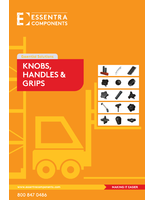Machining Software offers broad, in-depth functionality.
Share:
Press Release Summary:

With degree of automation that accelerates programming, FeatureCAM 2010 delivers functionality from 2D drilling and wire EDM to 5-axis milling and mill-turn operations. Support for multi-threading when generating 3D toolpaths allows calculations to be spread across multiple cores in dual- and quad-core computers. Combined drilling and milling functionality, spiral finishing option, tool-axis smoothing, and automatic rest roughing are also included.
Original Press Release:
Delcam Releases FeatureCAM 2010 Feature-Based CAM System
Delcam has released the 2010 version of its FeatureCAM feature-based machining software with enhancements across the full range of functionality, from 2D drilling and wire EDM, to five-axis milling and mill-turn operations. This broad range of improvements reflects the increased investment in development of the software since its acquisition by Delcam in 2005. Of course, FeatureCAM retains its key benefits by continuing to offer the fastest and easiest-to-use programming system on the market.
"FeatureCAM was the world's first feature-based programming system when it was introduced in 1995," claimed Development Director Tom McCollough. "More recently, other CAM developers have tried to copy our automated approach to programming. However, with our longer history and bigger R&D investment, we believe that FeatureCAM still maintains its clear leadership in knowledge-based machining. The high degree of automation means that it offers faster programming than any other CAM software, while the software is so simple to operate that it remains ideal for companies new to CNC machining and for casual users."
A range of improvements in the 2010 version will make FeatureCAM even quicker. Most important of these developments is support for multi-threading when generating 3D toolpaths. This allows calculations to be spread across multiple cores in dual- or quad-core computers. Average time savings are around 25% on a dual-core PC.
Improved algorithms have been introduced within the user interface to speed up the editing of features and to reduce the time needed to switch between machine-tool set-ups, while more efficient handling of stock models will reduce the memory required for calculations and so enhance performance still further.
The most innovative new programming option is combined drilling and milling functionality that will allow more efficient hole creation on machines fitted with automatic tool changing. It generates roughing and finishing toolpaths to produce any holes for which the appropriate drill is not loaded, using the existing tooling within the machine's crib.
The new option is much faster than having to change the tooling available to match the set of hole sizes in each job, especially for companies manufacturing prototypes or short-run components. It will allow complex parts to be produced more easily in cases where the range of hole sizes is larger than the number of positions in the crib. In addition, the number of different tools that need to be stocked can be reduced and it will be much simpler to move jobs between different machine tools.
Companies that do not have automatic tool changing on their machines can also benefit. In some cases, it will be possible to use a combination of drilling and milling with a single cutter to generate all the holes in the part. This could then allow the complete sequence to be run without the machine needing to be manned and without interruptions to change the tooling.
Other new options include a new spiral finishing option that gives faster machining and improved surface finish with no dwell marks, and automatic rest roughing to minimise air cutting when applying a series of progressively-smaller roughing cutters. In addition, a 3D chamfer can be added to a part, even when this is not shown in the model, for de-burring and similar clean-up operations.
Two improvements have been duplicated from PowerMILL to give faster machining and better surface finish. FeatureCAM now has the same ability to redistribute the points within any toolpath to enable faster, smoother machining. Similarly, the program can now undertake tool-axis smoothing to avoid sudden changes in orientation of the cutter during five-axis machining.
Machining simulation has also been made faster and more accurate, in particular for simultaneous five-axis machining. In addition, a new dual-view option allows a part to be viewed from two different angles simultaneously. This will be most helpful when simulating the production of large or complex parts.
The range of post-processors available with FeatureCAM has been further extended for both five-axis and mill-turn equipment. New machines now supported include the DMG CTX and GMX, Doosan Puma MX and TT, Mazak Integrex ST, Nakamura NTX and NTJX, and Okuma Macturn.
For further information on Delcam's FeatureCAM CAM system, please contact: -
Peter Dickin, Marketing Manager
Direct phone: 44 (0)121 683 1081 e-mail: marketing@delcam.com
Delcam plc,
Small Heath Business Park,
Birmingham, B10 0HJ, UK
www.delcam.com




